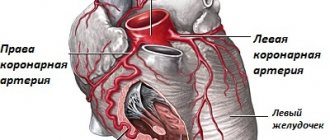Types of diabetic coma
Increased attention to the prevention of the development of diabetic comas is due to the high level of complications of these life-threatening conditions. The mortality rate for diabetic ketoacidosis (DKA) in European countries is 2-7%, in the Russian Federation 7-19% [1].
The incidence of DKA in people living with type 1 diabetes mellitus (DM) is 10-100 cases per 1000 cases. About a third of them end up in hospitals in a state of diabetic coma [2]. At the same time, competent glucose-lowering therapy can significantly reduce the likelihood of developing comatose states and delay the development of other serious complications of diabetes [1].
There are 4 types of comas that develop in diabetes:
- Diabetic ketoacidotic. In the medical literature it is also referred to as hyperglycemic hyperketonemic.
- Diabetic non-ketoacidotic hyperosmolar. It is also hyperosmolar non-acidotic.
- Lactic acidosis (lactic acidosis).
- Hypoglycemic coma [2, 3, 7].
Hyperlactic acidemic coma: features and consequences
This form of coma is observed during hypoxia (oxygen starvation), which develops against the background of insulin deficiency. In such cases, the pathology is accompanied by an accumulation of lactic acid, which leads to a change in the chemical composition of the blood. The result is a narrowing of peripheral vessels, impaired contractility and excitability of the myocardium.
In most cases, this type of diabetic coma is associated with cardiac and respiratory failure, inflammatory processes, and infections. Risk factors include chronic liver and kidney diseases, alcoholism.
Ketoacidotic
Hyperglycemic hyperketonemic coma is an acute decompensation of diabetes, which develops as a result of severe insulin deficiency. At the same time, there is a lot of glucose in the blood, but in the absence of insulin it does not enter the cells, so fat begins to be used as an energy source instead of carbohydrates.
Active breakdown and inclusion of free fatty acids in metabolism leads to the formation of ketone bodies. Their synthesis increases to 1000 mmol per day, which significantly exceeds the ability of the kidneys to excrete ketones in the urine [7].
Changes in blood and urine tests in diabetic ketoacidosis in adults are presented in table [1].
| Laboratory indicators | Values |
| Blood plasma glucose | >13 mmol/l to 18-20 mmol/l [3] |
| Plasma ketone bodies | >5 mmol/l |
| Ketonuria | ≥++ |
| pH | ˂7,3 |
Clinical picture and symptoms
With the development of diabetic coma, the patient develops a number of characteristic symptoms that form the clinical picture of this pathological condition. Symptoms of diabetic coma are as follows:
- Strong feeling of thirst.
- Frequent urination, while the volume of urine increases significantly and its concentration decreases.
- Severe weakness.
- Itchy skin and dry mucous membranes as a result of dehydration.
- Loss of consciousness.
- Apple odor on breath.
Clinical symptoms of acute hyperglycemia are ketoacidosis and severe dehydration. All of the above signs of a diabetic coma appear sequentially, and their severity quickly increases.
Diabetic coma: causes
The pathogenesis of diabetic coma lies in the insufficient production of the main hormone responsible for carbohydrate metabolism in the body - insulin. A deficiency of this hormone leads to the development of a serious disease – diabetes. With a sharply reduced amount of insulin in the blood, blood glucose ceases to be absorbed by the body's cells, which leads to a significant increase in its concentration in the blood and the manifestation of symptoms of diabetic coma.
Treatment
The development of diabetic coma can be prevented with specialized medical care. It is necessary to monitor the level of glycemia in the blood and select the correct dosage of insulin based on the glycemia and weight of the victim. The water deficit must be replenished - rehydration therapy is carried out. All procedures for relieving diabetic coma can be carried out at the Clinical Institute of the Brain, which employs qualified doctors who can quickly overcome such an emergency condition as diabetic coma. After stabilizing the basic functions of the victim’s body, he is transferred to hospital treatment and precise correction of the metabolic consequences of diabetic coma is carried out.
Causes
The likelihood of developing a coma due to progressive ketoacidosis increases in the following cases:
- Errors in insulin therapy.
- Increased need for insulin in pregnant women, during surgical operations, the prescription of certain drugs (glucocorticosteroids, diuretics, etc.), physical activity, and stressful situations.
- Excessive intake of easily digestible carbohydrates and fats from food in case of severe dietary violations [4, 7].
Hypoglycemic coma and its causes
Hypoglycemic coma is characterized by a reverse development mechanism - complications arise due to a sharp decrease in blood glucose levels, which is accompanied by energy deficiency and brain hypoxia.
According to statistics, most often this type of coma occurs for the following reasons:
- against the background of an overdose of antihyperglycemic drugs or insulin;
- after the administration of insulin, the person did not eat or there were no much-needed carbohydrates in the food;
- sometimes the development of a coma may be associated with physical fatigue and heavy exertion;
- The list of reasons also includes some diseases (for example, decreased activity of the adrenal glands), against the background of which tissue sensitivity to insulin increases.
Symptoms
A person with ketoacidosis' condition worsens gradually, usually over 1-2 days or more. The clinical picture is divided into 3 successive stages:
- Moderate ketoacidosis. There is weakness, lack of appetite, thirst, dry skin and mucous membranes, and frequent urination. The smell of acetone appears in the exhaled air.
- Hyperketonemic precoma. Muscle weakness, thirst, dry mouth increases. Abdominal pain, heart pain occur, and decreased vision is noted. The patient is inhibited.
- Ketoacidotic coma. The man loses consciousness. A characteristic rare deep noisy breathing appears with a noticeable odor of acetone in the exhaled air [7].
Coma with diabetes: first aid
Patients with diabetes are usually warned about the possibility of developing coma and told about the algorithm of actions. What should you do if a patient shows signs of a condition such as a sugar coma? The consequences are extremely dangerous, so a sick person needs to measure their glucose level using a glucometer. If the sugar level is elevated, you need to inject insulin; if it is low, eat candy or drink sweet tea.
If the patient has already lost consciousness, it is important to place him on his side so as to prevent the tongue from retracting and vomit from entering the respiratory tract. If the patient has removable dentures, they also need to be removed. It is recommended to wrap the victim so as to warm the lower extremities. Next, you need to call an ambulance - the patient needs quick and qualified help.
Hyperosmolar non-acidotic
Non-ketoacidotic hyperosmolar coma also develops due to acute decompensation of diabetes. It is based on a sharp decrease in insulin levels and loss of fluid from the body. In this case, there is no excessive formation of ketone bodies and acidosis [7].
| Laboratory indicators | Values |
| Blood plasma glucose | >30 mmol/l |
| Blood osmolarity | 400-500 mOsm/l [4] |
In a general blood test, an increase in hemoglobin and hematocrit levels is noted due to a decrease in plasma volume. There is no acetone in the urine [3].
Pathogenesis and symptoms of hypoglycemia
As the sugar level drops to 2.77-1.66 mmol/l, very characteristic symptoms begin to appear. The person notices an increased feeling of hunger. Trembling appears in the hands, the skin becomes pale.
There is a decrease in mental and physical activity. Disorders of the nervous system are possible, in particular inappropriate behavior, feelings of anxiety and fear, excessive aggression, and mood swings. Glucose deficiency is accompanied by tachycardia and increased blood pressure.
If the sugar level drops to 1.38 mmol/l, the patient usually loses consciousness. In such cases, you need to take the person to the hospital department as soon as possible.
Causes
Most often, hyperosmolar non-acidotic coma develops in elderly people living with type 2 diabetes [3]. Provoking factors include any diseases and conditions in which the body actively loses fluid:
- irrational use of diuretics;
- diseases accompanied by recurring diarrhea and vomiting;
- staying in conditions that cause active sweating (working in a hot shop, moving to a country with a hot climate, etc.).
Also, this type of diabetic coma can develop with myocardial infarction, massive bleeding, and in patients on hemo- or peritoneal dialysis [7].
Hyperosmolar coma and its causes
This type of coma is associated with severe dehydration, as a result of which the osmolarity of the blood changes. An increase in the level of glucose, urea and sodium ions is also observed. The pathology develops slowly - several days or even weeks may pass between the appearance of the first symptoms and loss of consciousness.
The risk of developing hyperosmolar coma increases with renal failure, trauma, severe burns, bleeding, and stroke. Risk factors include allergic reactions, sun and heat stroke, and infectious diseases.
Dehydration is sometimes the result of uncontrolled use of diuretics, severe vomiting, or prolonged diarrhea. Reasons include improper drinking regimen and living in regions with a hot climate.
Symptoms
The patient's health deteriorates slowly over 1-2 weeks. At the precoma stage, severe thirst, dry mouth, dryness and decreased skin turgor, and frequent excessive urination are noted.
In a coma, as a result of fluid loss, the patient's facial features become sharpened, the eyeballs sink and become soft to the touch. There is no smell of acetone in the exhaled air. Various neurological disorders are characteristic: pathological reflexes, nystagmus, paralysis, epileptiform convulsions. The result of blood thickening can be thrombosis of arteries and veins [3, 7].
Sugar coma: consequences
Unfortunately, this phenomenon is considered quite common. How dangerous is a sugar coma? The consequences may vary. This condition is accompanied by serious metabolic disruptions. There is depression of the central nervous system. Coma can last for several days, months or even years. The longer the patient remains in this condition, the higher the likelihood of developing a complication such as cerebral edema.
With adequate treatment, the outcome is usually quite favorable. On the other hand, cerebral edema can lead to significant damage to the central nervous system and, accordingly, functional impairment. For example, some patients suffer from memory and speech disorders and problems with coordination. The list of consequences includes serious pathologies of the cardiovascular system. Coma due to diabetes mellitus in children sometimes leads to further delays in mental and physical development.
Unfortunately, patients are not always able to recover from the consequences of a coma. This is why it is important to take precautions.
First aid
Correction of the patient's condition is carried out in a medical institution. People with moderate ketoacidosis are hospitalized in the therapeutic/endocrinology department, and in a state of precoma and coma - in the intensive care unit [4].
At home you can:
- conduct a rapid glycemic analysis if you have a glucometer;
- call an ambulance.
A person with ketoacidosis can be given 20 units intramuscularly. short-acting insulin (RAI) [4]. With moderate hypoglycemia, the patient needs to take easily digestible carbohydrates (sugar dissolved in tea, water, a piece of bread) [3].
In the emergency department, a urine test for ketone bodies is additionally performed and infusion therapy begins with the introduction of a 0.9% NaCl solution at a rate of 1 l/h [4].
Diagnostic measures
Diabetic coma is characterized by symptoms that will not go unnoticed by the doctor. After examining the patient, the specialist can determine his condition and provide the necessary assistance. However, correct diagnosis is important. First of all, laboratory and biochemical analysis of blood and urine is carried out.
In case of hypoglycemia, a decrease in sugar level can be noted, in all other cases - its increase to 33 mmol/l or more. The presence of ketone bodies, an increase in plasma osmolarity, and an increase in the level of lactic acid in the blood are taken into account. In a comatose state, the functioning of the nervous system and other organs is assessed. If complications occur, symptomatic therapy is necessary.
Consequences
Diabetic coma has a number of adverse consequences for human health, as it contributes to the rapid progression of diabetes, disrupts or aggravates existing disorders in the functioning of internal organs. For example, older people who have suffered a hypoglycemic coma develop:
- cerebral edema (in 26% of cases);
- acute cardiovascular failure (22%);
- atrial fibrillation (13%) [6].
Fear of hypoglycemia can cause inadequate blood sugar control [5].
Hyperglycemic (diabetic) coma
The precomatous and comatose state of patients with diabetes mellitus requires their emergency hospitalization. Comprehensive treatment of coma includes restoring insulin deficiency, combating dehydration, acidosis, and loss of electrolytes. In the initial stage of a diabetic coma, insulin must first be administered. Only crystalline (simple) insulin is administered and in no case long-acting drugs. The dosage of insulin is calculated depending on the depth of the coma. For mild coma, 100 units are administered, for severe coma - 120-160 units, and for deep coma - 200 units of insulin. Due to impaired peripheral circulation with the development of cardiovascular failure during the period of diabetic coma, the absorption of administered drugs from subcutaneous tissue slows down, therefore half of the first dose of insulin should be administered intravenously in 20 ml of isotonic sodium chloride solution. For elderly patients, it is advisable to administer no more than 50-100 units of insulin due to the risk of developing coronary insufficiency in them. In precoma, half the full dose of insulin is administered.
Subsequently, insulin is administered every 2 hours. The dose is selected depending on the blood glucose level. If after 2 hours the blood glucose level increases, then the dose of administered insulin is doubled. The total amount of insulin administered in diabetic coma ranges from 400 to 1000 units per day. Along with insulin, glucose should be administered, which has an anti-ketogenic effect. It is recommended to start administering glucose after its level in the blood begins to fall under the influence of insulin. A 5% glucose solution is administered intravenously. To restore lost fluid and electrolytes, 1-2 liters per hour of an isotonic sodium chloride solution is injected intravenously in combination with 15-20 ml of a 10% solution of potassium chloride, heated to body temperature. In total, 5-6 liters of liquid are administered per day; for patients over 60 years of age, as well as in the presence of cardiovascular insufficiency - no more than 2-3 liters. To combat metabolic acidosis, 200-400 ml of a 4-8% solution of freshly prepared sodium bicarbonate is administered intravenously, which cannot be mixed with other solutions. Intravenous administration of 100-200 mg of cocarboxylase, 3-5 ml of 5% ascorbic acid solution is indicated. To restore hemodynamic disorders, cardiac glycosides are prescribed (1 ml of 0.06% solution of corglycone intravenously), 1-2 ml of a 20% solution of caffeine or 2 ml of cordiamine are injected subcutaneously or intravenously.
Prevention of coma in diabetes
Complications of diabetes, coma in particular, can be very dangerous. That is why it is better to monitor your own condition and follow some precautionary rules:
- you need to follow the diet prescribed by your doctor and follow a diet;
- the patient is obliged to regularly go to the doctor for examinations and undergo tests;
- Self-control and compliance with safety rules are important (the patient must have a glucometer with him and regularly measure blood sugar levels);
- An active lifestyle, frequent walks in the fresh air, and feasible physical activity are recommended;
- it is very important to follow precise recommendations and observe the dosages of insulin and other medications;
- Under no circumstances should you self-medicate or use any traditional medicine without first consulting your treating endocrinologist.
Compliance with such simple rules in most cases helps prevent the development of complications, including the onset of coma. If any alarming changes occur, you should immediately consult a doctor.










